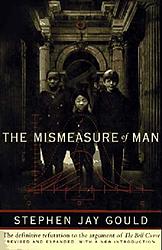The Mismeasure of Man by Stephen Jay Gould
The book is a critical analysis of the history of scientific racism and biological determinism, the belief that social and economic differences among human races, sexes, and classes are inheritable, inevitable, and natural. It challenges the idea that intelligence can be measured accurately and placed in a single, linear scale. The author refutes the arguments of those who support these theories, arguing that they are based on flawed methodologies, biased data, and unverifiable assumptions. Instead, he proposes that intelligence is multifaceted and cannot be quantified simplistically.
The 890th greatest book of all time
- Published
- 1981
- Nationality
- American
- Type
- Nonfiction
- Pages
- 352
- Words
- 134,000
- Original Language
- English
If you're interested in seeing the ranking details on this book go here
This book is on the following lists:
- 17th on 25 Greatest Science Books of All Time (Discover Magazine)
- 24th on The Modern Library | 100 Best Nonfiction (The Modern Library)
- 50 Memorable Books from 50 Years of Books to Remember (The New York Public Library)
- National Book Critics Circle Award - Nonfiction (National Book Critics Circle)
- 100 All-Time Greatest Popular Science Books (Open Education Database)
- The Well-Educated Mind (Book)

